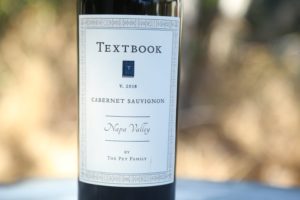
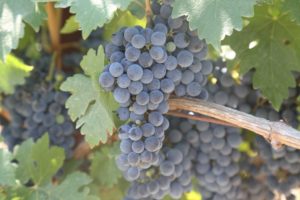 TEXTBOOK Napa Valley was founded by Jonathan and Susan (died in 2016) Pey in 2004. We caught up with Jonathan before he moved to Burgundy. What ultimately became an important event and influence in Jonathan’s life occurred when he was in his teens; his father announced that he had been transferred to France for work and the family would be moving to Paris. Jonathan spent three years living in France and during that time he quickly realized as he puts it, that wine was part of meals rather than milk which he had been raised with in the states. Returning from abroad he earned his undergraduate degree in Agronomy from the University of Arizona and began working as a sales manager for Kobrand Corp in New York City. Jonathan fondly remembers that time in his life where education was an integral part of working for the company and Kobrand would often send employees overseas to gain an international wine perspective. It was while working at Kobran that he was introduced to Napa Valley. And this was just the beginning of what would ultimately translate into a diverse international career in the world of wine.
TEXTBOOK Napa Valley was founded by Jonathan and Susan (died in 2016) Pey in 2004. We caught up with Jonathan before he moved to Burgundy. What ultimately became an important event and influence in Jonathan’s life occurred when he was in his teens; his father announced that he had been transferred to France for work and the family would be moving to Paris. Jonathan spent three years living in France and during that time he quickly realized as he puts it, that wine was part of meals rather than milk which he had been raised with in the states. Returning from abroad he earned his undergraduate degree in Agronomy from the University of Arizona and began working as a sales manager for Kobrand Corp in New York City. Jonathan fondly remembers that time in his life where education was an integral part of working for the company and Kobrand would often send employees overseas to gain an international wine perspective. It was while working at Kobran that he was introduced to Napa Valley. And this was just the beginning of what would ultimately translate into a diverse international career in the world of wine.
From 1993 through 1996 he worked at Schramsberg and helped oversee that wineries’ partnership with Portuguese winemakers João Carvalho Maia and Celso Pereira. Jointly they established Caves Transmontanas, producer of the Vértice still and sparkling wines near the town of Alijó in the Douro Valley. While Schramsberg is no longer involved in the operations, Caves Transmontanas continues to produce premium wines in this part of Portugal. Later he ran the international operations for Seagram Chateau & Estate Wines and eventually helped with the partnership between Robert Mondavi Winery and Rosemount Winery in Australia.
His introduction to potentially growing grapes in Marin County was through a book he and Susan read called “Early Marin” which described in part immigrants coming to Marin County and planting early vineyards. Later some of these farmers were pushed out of Marin County after the earthquake of 1906 when residents of San Francisco moved across the bay. Today Marin County is certainly not noted as a grape growing region (and in west Marin, minimum lot sizes are 80 acres which complicates the economics of growing small vineyards) – but intrigued by what they read in this book, Jonathan and Susan decided to grow grapes.
Jonathan owned about 7 acres of vines in west Marin County and produced Pinot Noir and a dry Riesling from old dry farmed vines. Their first vintage of the Pey-Marin wines was in 2002. In 2021 he shut down Pey’s operations, moved to southern Burgundy (Beaujolais in the village of Morgon) and purchased four acres of vineyard land with vines dating to 1953. His first vintage was in 2022 with the resulting wines to be a Gamay.
When deciding on producing wine from Napa Valley – it didn’t take Jonathan and Susan long to identify Oakville as the region they would focus on. A vineyard that Textbook still works with today was their first source – Vyborny Vineyard owned by Alex Vyborny. The vineyard is next to the Screaming Eagle property; incidentally a bunch of topsoil was removed decades ago to help build the nearby Rector Dam – the remaining soils in Vyborny Vineyard are rocky and alluvial in nature.
The name Textbook came about when Jonathan was tasting his first vintage from barrel. He remembers pulling out the wine with a wine thief into two glass and noticing the dark color, the density, the texture and the exotic aromas. He said something like, “this is classic Oakville Cabernet Sauvignon – so textbook like”. And the name rung true. Surprisingly it was never trademarked. His goal with his Napa Valley Cabernet Sauvignon is to provide its varietal expression and make people want to say, “this is what Napa Valley Cabernet Sauvignon smells and tastes like”.
Over the years TEXTBOOK has worked with other growers in Oakville but has also worked with numerous growers up and down the valley. Integral to their success has been working with top vineyards but also being prudent financially – never taking out a huge loan, growing slowly, using a custom crush winery in the city of Napa and never purchasing vineyards.
The focus of Textbook Vineyards is on Napa Valley grown and produced wines – a style that reflects Jonathan’s European sensibility striving to showcase the varietal nuances, of their Cabernet Sauvignon especially, rather than power, focusing on balance and elegance. He tends to pick the grapes earlier then his neighbors – while still looking for depth of flavor but also for brightness.
In 2019 with the business growing and taking up even more time, Jonathan sold TEXTBOOK Vineyards to Distinguished Vineyards & Wine Partners – a group whose parent company is Kirin Brewery Company in Japan and who is also associated with Mercian, a Kirin subsidiary (owning wineries in Japan, France and Markham Vineyards in the Napa Valley). Today Jonathan remains actively involved overseeing the winemaking (with a consulting winemaker), their vineyard sources and participating in select marketing events.
From a vision of producing wine in Marin County to working with top vineyards in the Napa Valley, to currently overseeing his small vineyard project in Beaujolais, it has been quite a ride for Jonathan. He recalls their first vintage in Marin County was merely 5 cases; now the TEXTBOOK wines are distributed in select Whole Foods markets and even within parts of Asia.
Select Wines
Sauvignon Blanc
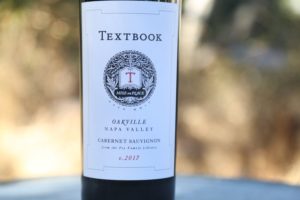
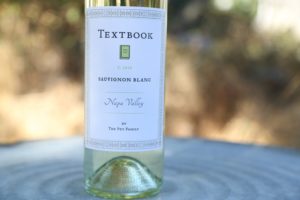 The 2023 TEXTBOOK Sauvignon Blanc, Russian River Valley is pale straw in color; the youthful and energetic bouquet offers aromas of pineapple guava, honeydew melon, green apple, kiwi, passion fruit and kumquat. This latter aromatic reminds us of slyly picking picking ripe kumquats off of the tree near the walkway entrance to Schramsberg Winery and the resulting zesty smell when we bite into one of their fruits. Highly citrus-like, there are also scents of lime, lemon zest, pomelo and citrus blossom, which reminds us of spring time. Not as citrus driven on the palate as on the bouquet, it offers flavors of white nectarine, pineapple, peach, papaya and grapefruit. This wine is balanced perfectly between this varieties’ inherent acid driven/citrus palate profile, a supple texture and ripeness; it is highly enjoyable to drink by itself. Bright, bouncy and flavorful, its fruit continues to persist for some time on the refreshing finish. 13.5% alcohol. It would pair nicely with a fresh garden salad drizzled in a citrus or vinaigrette dressing.
The 2023 TEXTBOOK Sauvignon Blanc, Russian River Valley is pale straw in color; the youthful and energetic bouquet offers aromas of pineapple guava, honeydew melon, green apple, kiwi, passion fruit and kumquat. This latter aromatic reminds us of slyly picking picking ripe kumquats off of the tree near the walkway entrance to Schramsberg Winery and the resulting zesty smell when we bite into one of their fruits. Highly citrus-like, there are also scents of lime, lemon zest, pomelo and citrus blossom, which reminds us of spring time. Not as citrus driven on the palate as on the bouquet, it offers flavors of white nectarine, pineapple, peach, papaya and grapefruit. This wine is balanced perfectly between this varieties’ inherent acid driven/citrus palate profile, a supple texture and ripeness; it is highly enjoyable to drink by itself. Bright, bouncy and flavorful, its fruit continues to persist for some time on the refreshing finish. 13.5% alcohol. It would pair nicely with a fresh garden salad drizzled in a citrus or vinaigrette dressing.
The 2019 TEXTBOOK Napa Valley Sauvignon Blanc (from vineyards in the Oak Knoll District and St. Helena) is medium straw in color; the bouquet offers minerality notes, honeysuckle, a lemon meringue and golden delicious apple. The bouquet is elegant and inviting. Balanced across the palate, this is our preferred ‘Napa’ style of Sauvignon Blanc – neither green nor grassy nor overly ripe and tropical. Offers flavors of grapefruit, lemon, and mandarin – complemented nicely with a zesty finish. Mouthwatering. Tastes great by itself but has the acidity to hold up to a number of pairings – most preferably seafood including scallops prepared with spicy Thai chili sauce. This wine is a combination of fruit from three vineyards in the Napa Valley – these vineyards are all farmed by hand from the pruning to the harvesting. Once the grapes were delivered to the winery, they were whole cluster pressed and were aged on the lees.
Merlot
The 2022 TEXTBOOK Merlot, Napa Valley is a blend of 91% Merlot and 9% Cabernet Sauvignon from vineyards spanning the length of Napa Valley including Oak Knoll, Yountville, Oakville and Calistoga. This wine is was fermented in stainless steel tanks and then aged for 14 months in French oak barrels of which 30% were new. It is deep ruby in color. This bouquet is simultaneously ripe and bright, offering aromas of red cherry, boysenberry, blackberry, raspberry, red plum, dark currant, licorice, anise, lilac, pipe tobacco and a gentle kiss of old cedar box. As the aromatics evolve, they open to notes of mocha and cocoa powder. Its scents lean more in the direction of red fruit, but with some complementary influences from its barrel aging. Bright and balanced, this light bodied but flavorful Merlot tastes like red plum, raspberry, red cherry and currant with a lingering note of dried tobacco leaf. The tannins sport a light gravelly grip with a seamlessly integrated texture. In terms of a pairing, try with BBQ pork shoulder. Its listed ABV is a refreshing 13.6%.
The 2021 TEXTBOOK Merlot Napa Valley is a blend of 76% Merlot and 24% Cabernet Sauvignon from vineyards in Oak Knoll and Yountville. It was fermented in stainless steel tanks with seven days skin contact before being pressed to French oak barrels of which 30% were new for 14 months of elevage. This wine is deep ruby in color; the bouquet opens to scents of raspberry, boysenberry, plum and dark cherry accompanied by a note of soy sauce and plenty of spice notes including cloves, dried dill seeds, pipe tobacco and a light kiss of toasted oak. As the wine evolves, it opens to a note of cocoa powder. Brightly lit across the palate and generous in terms of flavor, it offers notes of cherry, blackberry, raspberry, Persian mulberry and boysenberry. The finish is juicy, mostly red-fruited and lingers with a note of dried tobacco leaf and gravelly textured, grainy and not yet fully rounded tannins. Their earthy/dusty/drying character outpaces the fruit on the finish. We tried this wine 3 years post vintage. Cabernet Sauvignon enthusiasts who for whatever reason eschew Merlot, would perhaps enjoy this particular bottling. We would like to pair this with a lighter cut of beef and a BBQ – perhaps a medium rare Filet mignon.
Cabernet Sauvignon
The 2022 TEXTBOOK Cabernet Sauvignon, Paso Robles is 88% Cabernet Sauvignon, 5% Petite Sirah, 4% Merlot and 3% Syrah. This wine is deep ruby in color; sweet and berry fruited, the first aromatic we noted is of cranberry sauce. Tangy and bright, additional scents include plum compote, blueberries, dark raspberries, boysenberry, red cherries, currant and red licorice. And additional layers of vanilla and mocha. The berry characteristics on the nose are mimicked on the palate with flavors of cranberry, raspberry, boysenberry and Santa Rosa plum. A lighter bodied wine from this variety, the dusty tannins persist with a light gravelly and grainy grip felt more on the front of the palate. Its texture outruns the fruit. This wine finishes bright and red fruited. In its youth, this wine drinks comfortably and easily; we would drink it young and not necessarily store it for long term aging. In terms of a pairing, how about the California Burger from any of Gott’s Hamburger locations. This wine is a listed 13.9% ABV.
The 2020 TEXTBOOK Cabernet Sauvignon Napa Valley is 91% Cabernet Sauvignon and 9% Merlot. This wine is deep ruby in color; the immediate aromatic hit we noted was of cocoa powder and mocha, accompanied by scents of dark raspberry, cherry, plenty of ripe blackberry, boysenberry and dark plum. A couple of additional aromas are a faint hint of red chili spice, smoke, cardamom and cinnamon stick. On the palate there are flavors of cherry, plum, blackberry and raspberry. Easy drinking, if we had to guess, the gentle tannins would indicate a variety of valley floor vineyards. We later checked the technical notes for this wine; its sources were vineyards in Oak Knoll, Yountville, Rutherford and Calistoga. We have always been incredibly sensitive to smoke, both in the air and when we taste it. A product of the vintage, this wine lingers with a persistent note of campfire smoke/ash tray – which is much more pronounced on the palate than on the bouquet, although as the wine evolves in the glass and warms up, it also becomes more aromatically pronounced. When it comes to smoke taint, purists who don’t want any of it in their wines, will be turned off by this bottle, assuming all bottles of the 15,855 12pk cases show signs of smoke taint – while a large portion of the population probably won’t even notice. This wine was aged for 14 months in French oak barrels of which 35% were new. It is 13.3% alcohol.
The 2017 TEXTBOOK Napa Valley Cabernet Sauvignon (94% Cabernet Sauvignon, 6% Merlot) is medium to deeper purple in the glass; offers a higher-toned floral sweetness of aromatics including violets along with black licorice. Meaty at times, with additional aromas resembling a balsamic reduction. Shows ripe and spicy plum notes on the palate (think the skin of a Santa Rosa plum) along with flavors of blackberry. Very concentrated. The tannins are restrained, softer in texture lingering with a light dry grip along with notes of dried tobacco leaf and white pepper. Was aged 14 months in all new French oak – 30% of which was new. Lower alcohol – clocking in at a 1970s-esque, 13.3%.
The 2017 TEXTBOOK Oakville Cabernet Sauvignon is deep ruby in color: with darker aromatics of blackberry, cherry and cassis. In addition to the fruit, there is a pretty union of both dark chocolate and cedar along with notes of dried tobacco and further in the bouquet, clove and cardamom. Well concentrated with flavors of plum and darker cherry – juicy, a bit meaty and savory. This wine is mouthwatering on the finish and is anchored by grainy, darker, well-integrated tannins and notes of lingering cedar. This wine’s power is in its concentration yet its simultaneous balance. Good acidity. Approachable now but also very age worthy. Every bottle is numbered – 6000 bottles were produced packaged in 1000 six-bottle cases.
—
Total production of TEXTBOOK is around 21,000 cases per year with some international distribution including in Korea and Japan and select domestic outlets including restaurants, retail and Whole Foods. Locally one might be able to find select bottlings in CalMart in Calistoga. For more information, to join the wine club or to purchase directly, visit: www.textbookvineyards.com

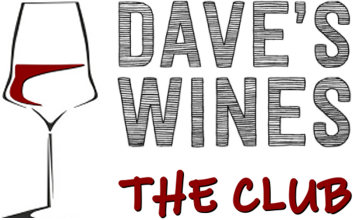




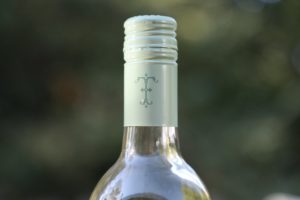
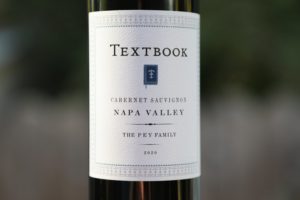
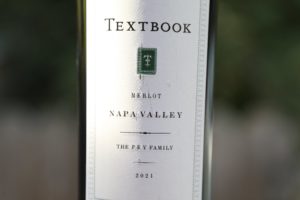
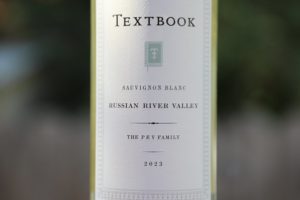
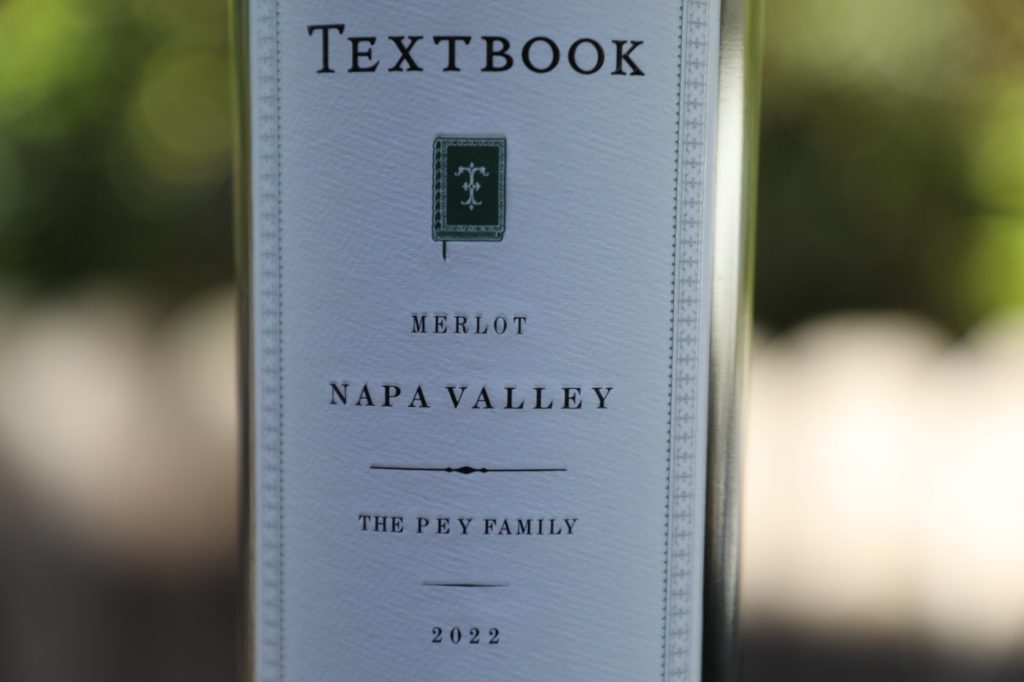
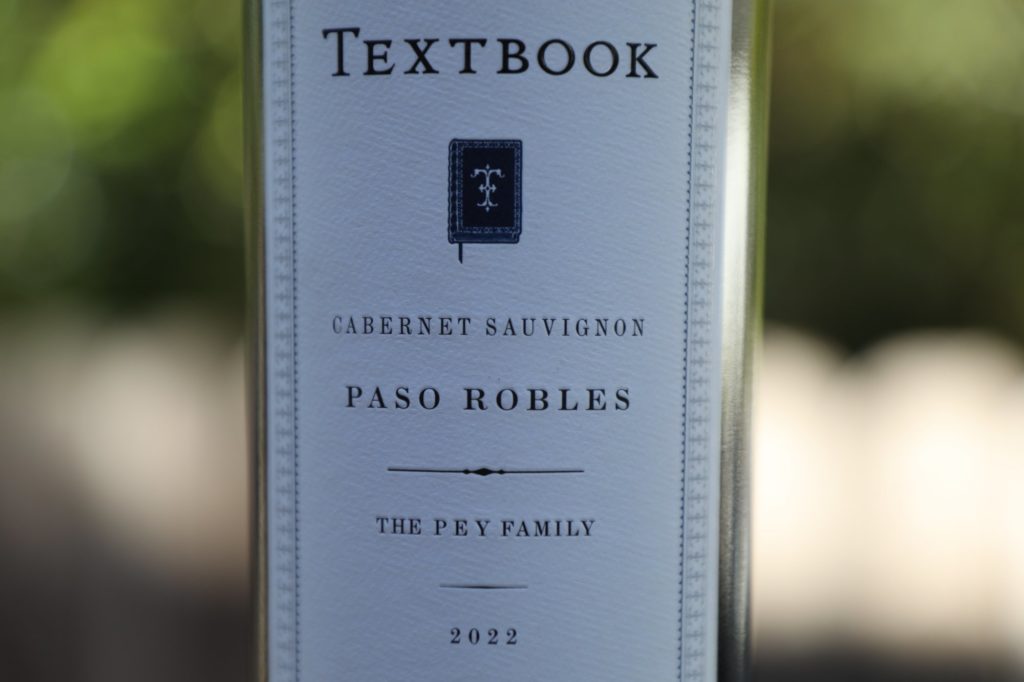
But my Cab is from Paso Robles.
TEXTBOOK does produce a Cabernet Sauvignon from Paso Robles. We love the central coast of California and hope to move back at some point.